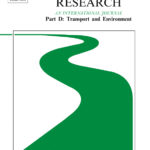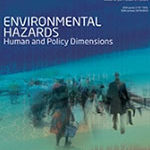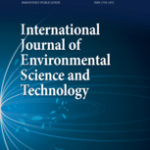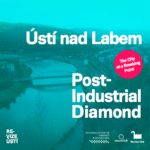
High-featured papers published in 2020
IEEP members has published papers in high featured research journals:
Sustainable urban mobility: One definition, different stakeholders’ opinions
The paper analyzed attitudes and view of selected key actors on sustainable urban mobility, conditions for strategic transport planning and the main barriers to the implementation of transport measures.
Abstract: During recent decades, the debate on how to sustain urban mobility has accelerated. Transport decision-making has been more reflective of sustainability issues and quality of life in cities; this process has especially accelerated with the setting of modern urban mobility planning concepts, substantially focusing on transport demand regulation and management, and Sustainable Urban Mobility Plans taking over the role of cities’ primary transport-related strategic documents. The approaches to sustainable mobility visioning and planning differ within cities, as do their key stakeholders’ opinions. Our research aims to reveal the main shared viewpoints on the preferred paths towards sustainable urban mobility. We use the Q method, which is a statistical method to study subjectivity. It enables determination of characteristic shared viewpoints on a particular subject. A qualitative analysis assessing subjective opinions is combined with the quantitative approach of a factor analysis of statements ranked by respondents. The study was undertaken on 36 carefully selected stakeholders situated within the Czech Republic. Our results indicate that even stakeholders sharing the same definition of sustainable urban mobility may substantially differ in regard to their ideas on how to achieve it. Furthermore, we show that some of the attitudes expressed and measures appreciated by our respondents would not be recognised as sustainable by environmentalists. There is still a wide gap between sustainable mobility theory and its implementation in practice. All these findings represent barriers to sustainable mobility development in urban areas. Therefore, the paper also conveys relevant policy implications.
Citation: Brůhová Foltýnová, H., Vejchodská, E., Rybová, K., & Květoň, V. (2020). Sustainable urban mobility: One definition, different stakeholders’ opinions. Transportation Research Part D, 87, https://doi.org/10.1016/j.trd.2020.102465
Download: Paper available at the publisher here
Development and implementation of the concept of disproportionate costs in water management in Central Europe in the light of the EU WFD
Approches to exemption justifications from the good water status according to Water Framework Directive
Abstract: Many Central European water bodies that failed to achieve the good ecological and chemical status required by the Water Framework Directive in the first management cycle are expected to again fail in the second cycle. An exemption from achieving good status may be applied for under certain circumstances but must be justified. One option is to show that achieving good status is not cost proportionate, but no uniform methodology for assessing proportionality exists in the EU. The paper maps the existing approaches to this type of justification in the Central European countries. The methods used to justify exemptions differ significantly among the countries. A large majority of reports mention monetary cost–benefit analysis, although a range of other methods such as distribution of costs, affordability and criterial cost–benefit analysis are also utilised. The findings show that countries that have experience with proportionality assessment from the first management cycle or have created clear and easy-to-use methodologies (or none) are more likely to justify the exemption by citing disproportionate costs; on the other hand, a higher complexity of methodology – such as used in the Czech Republic – creates incentives to avoid using the disproportionate-cost justification and to instead utilise other available types of justification.
Citation: Macháč, J., Brabec, J., & Vojáček, O. (2020). Development and Implementation of the Concept of Disproportionate Costs in Water Management in Central Europe in the Light of the EU WFD. Water Alternatives, 13(3), 3
Download: ↓here
Public and community conservation of biodiversity – rivalry or cooperation?
What is the history and current evolution of land trusts in post-socialist reality in Czech Republic?
Abstract: Although private or community initiatives for biodiversity conservation (such as land trusts) have a strong tradition in many countries, rigorous evidence of recently evolved movements in post-socialist countries is missing. This study describes the evolution of Czech land trust movement and analyses their representatives’ motivation for engagement in biodiversity conservation. It also investigates the intensity of interaction among public and land trust conservation efforts. For this purpose, we identified localities in which the territory managed by Czech land trusts overlaps with small-scale public nature reserves managed by regional governments. We conducted semi-structured face-to-face interviews with representatives of all NGOs and regional officials in-charge. Our qualitative analysis revealed that some regional biodiversity conservation officials see land trusts as partners, but others are rather indifferent to, or uninformed about, their activities. Additionally, land trust representatives see themselves as complementing the public effort: their main motivation for engagement is to facilitate biodiversity conservation in addition to the public provision.
Citation: Slavíková, L., Smutná, Z., Žambochová, M., & Valentinov, V. (2020). Public and community conservation of biodiversity–rivalry or cooperation? GeoScape, 14(1), 36
Download: ↓here
Interview for BBC Sounds
Our collegue and chair of LAND4FLOOD COST Action, Lenka Slavíková, was interviewed in Caz Graham show titled “Flooding Britain”. Listen to the entire section here: https://www.bbc.co.uk/sounds/play/m000j22g (or find Lenka speaking from 21st minute).
Approaches to state flood recovery funding in Visegrad Group Countries
Paper compares state flood recovery funding in the so-called Visegrad Group Countries (V4), i.e. Czechia, Hungary, Poland and Slovakia, over the past 30 years of their democratic history.
Abstract: Flood recovery is an important period in the flood risk management cycle. Recently, flood recovery has become viewed as an opportunity for future flood damage mitigation. Financial flows to cover flood damages and rules regarding their allocation are crucial for supporting or undermining mitigation efforts. In this paper, we map and compare state flood recovery funding in the so-called Visegrad Group Countries (V4), i.e. Czechia, Hungary, Poland and Slovakia, over the past 30 years of their democratic history. We apply a qualitative comparative approach to identify differences and similarities in risk sharing and state flood recovery funding approaches among these countries. Additionally, we reveal how risk sharing is addressed by existing flood recovery funding schemes. The results indicate that national governments have a low willingness to institutionalise ex-ante compensation schemes. Ad hoc instruments initiated shortly after disastrous flooding usually do not provide incentives to reduce future flood damages.
Citation: (2020) Approaches to state flood recovery funding in Visegrad Group Countries, Environmental Hazards, 19:3, 251-267, DOI: 10.1080/17477891.2019.1667749
Externalities in agriculture: How to include their monetary value in decision-making?
From an economic point of view, implementation of measures in agriculture in the South Moravian Region makes sense.
Abstract: Soil protection and sustainable agriculture have become a key issue in Common Agricultural Policy. Emphasis is being placed on climate-smart agriculture, nature-friendly agricultural technologies and implementation of a range of nature-based measures to protect soil, retain water in landscape, etc. Recent agricultural policy is mostly based on qualitative assessment of the current state and impacts of technologies. Economic assessment is still missing, although subsidies and other forms of financial support are provided from both national and European Union funds. Externalities in agriculture not only generate social costs and profits for the current generation but also strongly affect future well-being. The objective of this paper is to present a newly developed approach that enables monetary assessment of externalities in agriculture. The process of monetary assessment means inclusion and calculation of all costs and benefits, including positive and negative externalities going beyond financial revenue. The methodology is based on modified cost–benefit analysis using the concept of ecosystem services. The proposed method is demonstrated on a case study in the South Moravian Region of the Czech Republic. This region has been struggling with drought in the last few years, but its agricultural technologies are not adapted and appropriate nature-based solutions are not implemented. Economic analysis focuses on assessment of externalities and possible measures. It covers operating and investment costs; the loss of profits due to decreasing production; and benefits consisting mainly of prevented loss of regulating services. The results show that implementation of measures is always preferable regardless of climate change and avoids society loss.
Citation: Macháč, J., Trantinová, M., Zaňková, L. (2020). Externalities in agriculture: How to include their monetary value in decision-making?, International Journal of Environmental Science and Technology, 18 p., doi: https://doi.org/10.1007/s13762-020-02752-7
Improving the quality of life in cities using community gardens: from benefits for members to benefits for all local residents
How does community gardens improve the quality of life in cities not only of their members but also of other city residents?
Abstract: Recent effects of globalization, urbanization and climate change have resulted in an increasing interest in the quality of life in cities and seeking pathways for its improvement. At the same time, there are changes in society and lifestyles that may challenge or facilitate these pathways. Community gardens (CGs) represent an effort to provide more sustainable urban economies, while reflecting on the public demand for cultivation of own crops. However, members of CGs may not perceive all the benefits that CGs provide for their surroundings. Using two case studied from Czechia (CG Kuchyňka and CG Vidimova in Prague) the aim of this paper is a comparison of the benefits perceived by community garden members and the evaluated net social benefits of community gardens in cities for all local residents. Through a questionnaire survey, the paper answers the research question of the benefits of community gardens perceived by community garden members. An economic assessment based on cost-benefit analysis was made to answer the question of the value of the net social benefits of community gardens in cities. Our comparison shows that the net social benefits are higher than perceived by their members. Net present benefits of EUR 31 550 for CG Kuchyňka and EUR 1 175 for CG Vidimova were quantified in a 50-year horizon. This economic analysis should contribute to greater support for community gardens by city governments and spatial planners.
Citation: Dubová, L., Macháč, J., (2019). Improving the quality of life in cities using community gardens: from benefits for members to benefits for all local residents, GeoScape(Vol. 13, No. 1), pp. 68-78, doi: https://doi.org/10.2478/geosc-2019-0005
We cooperated on the booklet creation: Ústí nad Labem: Post-industrial Diamond
Unusual guide for not-just-tourists: All you need to know about city planning challenges!
This is a brief guide to the city of Ústí nad Labem. This English booklet summarizes essential themes of the city that were raised during the community education series Re-vize Ústí. The booklet is devoted to foreign professionals and to people who want to learn more about the city they have visited. The booklet is a cooperative project of Re-vize Ústí and Jan Evangelista Purkyně University.
Download fulltext: ↓here
Ústí nad Labem: Post-industrial Diamond
Unusual guide for not-just-tourists: All you need to know about city planning challenges!
Continue reading







